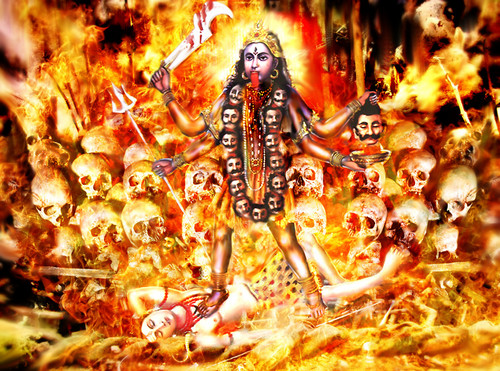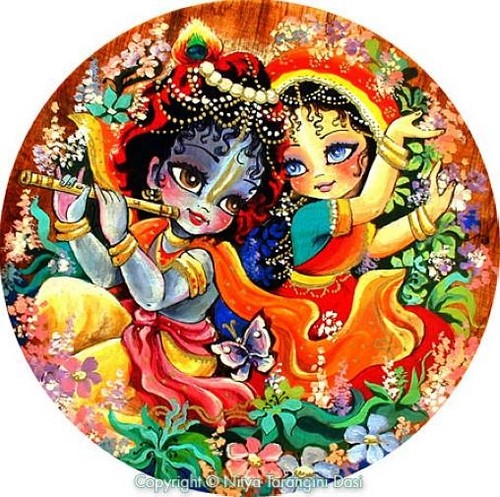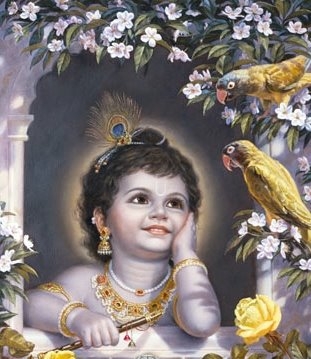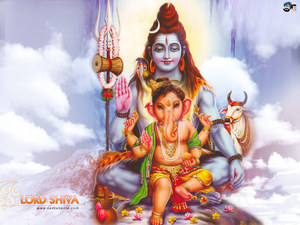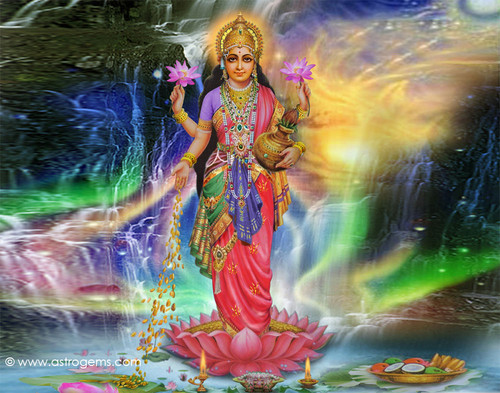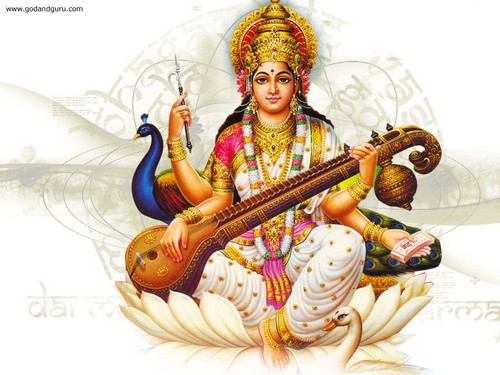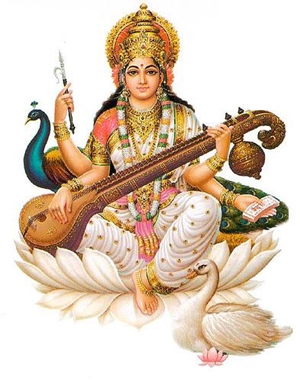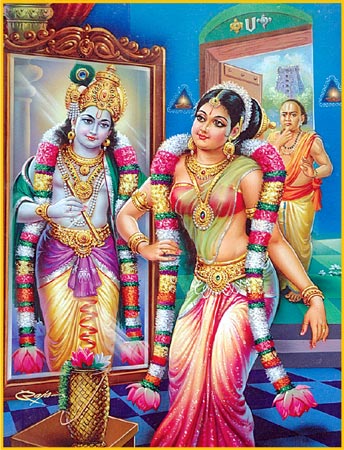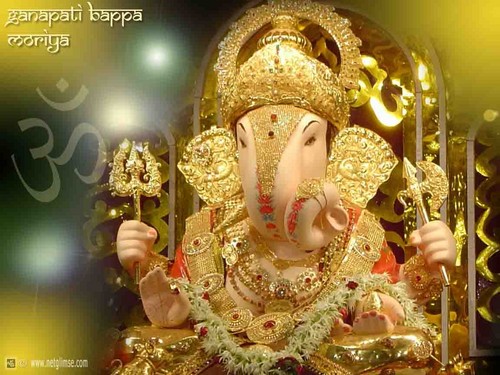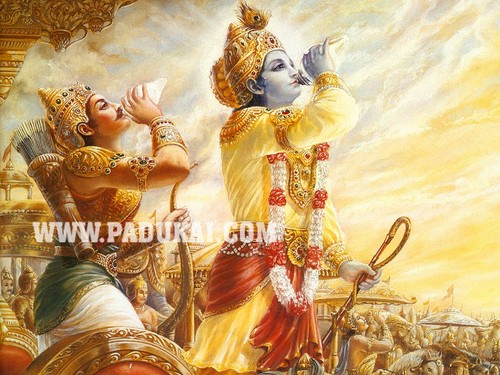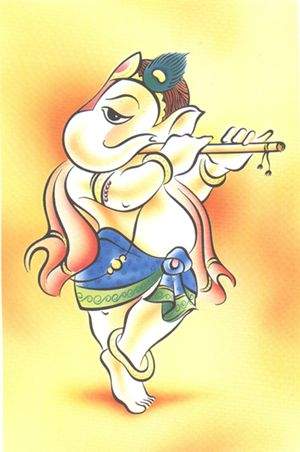The word Shakti means divine energy/force/power, and Durga is the warrior aspect of the Divine Mother/Brahman (Supreme Absolute Godhead).
Durga's feminine power contains the combined energies of all the gods. Each of her weapons was given to her by a different god: Rudra's trishula (trident), Vishnu's Sudarshana Chakra (wheel of divine vision), Indra's thunderbolt, Brahma's kamandalu (water pot), Kubera's gadā (mace), etc.
In Jain Texts, she is referred to as Durga or Kushmaandi devi and is the yakshini of 22nd tirthankar of Lord Neminath or Arishtanemi.
According to a narrative in the Devi Mahatmya story of the Markandeya Purana text, Durga was created as a warrior goddess to fight an asura (an inhuman force/demon) named Mahishasura. Brahma] had given Mahishasura the power not to be defeated by a male. Mahishasura had unleashed a reign of terror on earth, heaven and the nether worlds, and he could not be defeated by any man or god, anywhere. The gods were helpless. Shiva, realizing that no man or god (male) can defeat Mahishasura, made a request to his wife Parvati to take the role of a female goddess warrior in order to slay the demon. Parvati took his request and went to the Ashram of priest disciple named Katyayan to assume the role of a warrior. Meanwhile, the gods went to Brahma for help and, with Brahma, then made their way to Vaikuntha—the place where Vishnu lay on Ananta Naag. They found both Vishnu and Shiva, and Brahma eloquently related the reign of terror Mahishasur had unleashed on the three worlds. To save the worlds, Vishnu, Shiva and all of the gods emitted beams of fierce light from their bodies. The blinding sea of light reached Parvati at the Ashram of the priest Katyayan and Durga emerged from this pool of light. The goddess Durga took the name Katyaayani from the priest. She introduced herself in the language of the Rig-Veda, saying she was the form of the supreme female aspect of Brahman (Prakriti) who had created all the gods. Now she had come to fight the demon to save the gods. They did not create her; it was her lila that she emerged from their combined energy. The gods were blessed with her compassion.
To combat the evil Mahishasura, she had appeared in a great blinding light, to combat this demon and end it for all to be in peace. Mahishasura had gravely underestimated her, thinking: "How can a woman kill me, Mahishasur—the one who has defeated the trinity of gods?". However, Durga roared with laughter, which caused an earthquake which made Mahishasur aware of her powers.
And the terrible Mahishasura rampaged against her, changing forms many times. First he was a buffalo demon, and she defeated him with her sword. Then he changed forms and became an elephant that tied up the goddess's lion and began to pull it towards him. The goddess cut off his trunk with her sword. The demon Mahishasur continued his terrorizing, taking the form of a lion, and then the form of a man, but both of them were gracefully slain by Durga.
Then Mahishasur began attacking once more, starting to take the form of a buffalo again. The patient goddess became very angry, and proclaimed to Mahishasur in a colorful tone—"Roar with delight while you still can, O illiterate demon, because when I will kill you, the gods themselves will roar with delight."[this quote needs a citation] When Mahishasur had half emerged into his buffalo form, he was paralyzed by the extreme light emitting from the goddess's body. The goddess then resounded with laughter before cutting Mahishasur's head down with her sword.
Thus Durga slew Mahishasur, thus is the power of the fierce compassion of Durga. Hence, Mata Durga is also known as Mahishasurmardhini—the slayer of Mahishasur. According to one legend, the goddess Durga created an army to fight against the forces of the demon-king Mahishasur, who was terrorizing Heaven and Earth. After ten days of fighting, Durga and her army defeated Mahishasur and killed him. As a reward for their service, Durga bestowed upon her army the knowledge of jewelry-making.
The goddess, as Mahishasuramardini, appears quite early in Indian art. The Archaeological Museum in Matura has several statues on display including a 6-armed Kushana period Mahisasuramardhini that depicts her pressing down the buffalo with her lower hands.[4] A Nagar plaque from the first century BC – first century AD depicts a four-armed Mahisamardhini accompanied by a lion. But it is in the Gupta period that we see the finest representations of Mahisasuramardhini (2-, 4-, 6-, and at Udayagiri, 12-armed). The spear and trident are her most common weapons. A Mamallapuram relief shows the goddess with eight arms riding her lion subduing a buffalo-faced demon (as contrasted with a buffalo demon); a variation also seen at Ellora. In later sculptures (post-seventh century), sculptures show the goddess having decapitated the buffalo demon.
Durga's feminine power contains the combined energies of all the gods. Each of her weapons was given to her by a different god: Rudra's trishula (trident), Vishnu's Sudarshana Chakra (wheel of divine vision), Indra's thunderbolt, Brahma's kamandalu (water pot), Kubera's gadā (mace), etc.
In Jain Texts, she is referred to as Durga or Kushmaandi devi and is the yakshini of 22nd tirthankar of Lord Neminath or Arishtanemi.
According to a narrative in the Devi Mahatmya story of the Markandeya Purana text, Durga was created as a warrior goddess to fight an asura (an inhuman force/demon) named Mahishasura. Brahma] had given Mahishasura the power not to be defeated by a male. Mahishasura had unleashed a reign of terror on earth, heaven and the nether worlds, and he could not be defeated by any man or god, anywhere. The gods were helpless. Shiva, realizing that no man or god (male) can defeat Mahishasura, made a request to his wife Parvati to take the role of a female goddess warrior in order to slay the demon. Parvati took his request and went to the Ashram of priest disciple named Katyayan to assume the role of a warrior. Meanwhile, the gods went to Brahma for help and, with Brahma, then made their way to Vaikuntha—the place where Vishnu lay on Ananta Naag. They found both Vishnu and Shiva, and Brahma eloquently related the reign of terror Mahishasur had unleashed on the three worlds. To save the worlds, Vishnu, Shiva and all of the gods emitted beams of fierce light from their bodies. The blinding sea of light reached Parvati at the Ashram of the priest Katyayan and Durga emerged from this pool of light. The goddess Durga took the name Katyaayani from the priest. She introduced herself in the language of the Rig-Veda, saying she was the form of the supreme female aspect of Brahman (Prakriti) who had created all the gods. Now she had come to fight the demon to save the gods. They did not create her; it was her lila that she emerged from their combined energy. The gods were blessed with her compassion.
To combat the evil Mahishasura, she had appeared in a great blinding light, to combat this demon and end it for all to be in peace. Mahishasura had gravely underestimated her, thinking: "How can a woman kill me, Mahishasur—the one who has defeated the trinity of gods?". However, Durga roared with laughter, which caused an earthquake which made Mahishasur aware of her powers.
And the terrible Mahishasura rampaged against her, changing forms many times. First he was a buffalo demon, and she defeated him with her sword. Then he changed forms and became an elephant that tied up the goddess's lion and began to pull it towards him. The goddess cut off his trunk with her sword. The demon Mahishasur continued his terrorizing, taking the form of a lion, and then the form of a man, but both of them were gracefully slain by Durga.
Then Mahishasur began attacking once more, starting to take the form of a buffalo again. The patient goddess became very angry, and proclaimed to Mahishasur in a colorful tone—"Roar with delight while you still can, O illiterate demon, because when I will kill you, the gods themselves will roar with delight."[this quote needs a citation] When Mahishasur had half emerged into his buffalo form, he was paralyzed by the extreme light emitting from the goddess's body. The goddess then resounded with laughter before cutting Mahishasur's head down with her sword.
Thus Durga slew Mahishasur, thus is the power of the fierce compassion of Durga. Hence, Mata Durga is also known as Mahishasurmardhini—the slayer of Mahishasur. According to one legend, the goddess Durga created an army to fight against the forces of the demon-king Mahishasur, who was terrorizing Heaven and Earth. After ten days of fighting, Durga and her army defeated Mahishasur and killed him. As a reward for their service, Durga bestowed upon her army the knowledge of jewelry-making.
The goddess, as Mahishasuramardini, appears quite early in Indian art. The Archaeological Museum in Matura has several statues on display including a 6-armed Kushana period Mahisasuramardhini that depicts her pressing down the buffalo with her lower hands.[4] A Nagar plaque from the first century BC – first century AD depicts a four-armed Mahisamardhini accompanied by a lion. But it is in the Gupta period that we see the finest representations of Mahisasuramardhini (2-, 4-, 6-, and at Udayagiri, 12-armed). The spear and trident are her most common weapons. A Mamallapuram relief shows the goddess with eight arms riding her lion subduing a buffalo-faced demon (as contrasted with a buffalo demon); a variation also seen at Ellora. In later sculptures (post-seventh century), sculptures show the goddess having decapitated the buffalo demon.

Shiva is usually worshipped in the aniconic form of lingam. He is described as an omniscient yogi, who lives an ascetic life on Mount Kailash,[2] as well as a householder with a wife Parvati, and two sons, Ganesha and Kartikeya. Shiva has many benevolent as well as fearsome forms. He is often depicted as immersed in deep meditation, with his wife and children or as the Cosmic Dancer. In fierce aspects, he is often depicted slaying demons.



